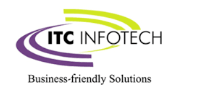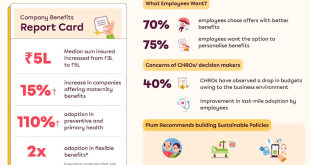Using graphene to improve the performance of energy storage devices has been a key focus ever since the 2D material was isolated. As soon as the first commercial graphene manufacturers were established, there has been a steady stream of announcements related to batteries, but perhaps none are as significant as the 2023 news of Evonik entering the field with their investment in SuperC.
Graphene has been proposed and used for numerous roles in energy storage applications, ranging from lead-acid batteries to supercapacitors, but the real target is lithium-ion batteries. This market is booming; IDTechEx forecasts the lithium-ion battery market to exceed US$430 Bn by 2033, so even getting a very small piece of this pie is significant. The market has several applications, from power tools to residential installations, but of course, the lion’s share will be used in the automotive sector. The role of graphene within the battery has again been diverse; companies have proposed using it as a coating to a current collector or as an enabling conductive network for alternative solutions such as lithium-sulphur. However, the predominant area is the role it can play in either enabling silicon anodes or improving the performance of current generation lithium-ion electrodes.
IDTechEx has been covering both the graphene and energy storage space for more than ten years. Their leading independent reports on the topic include interview-based player profiles, market forecasts and benchmarking studies. For more information, please see “Graphene Market & 2D Materials Assessment 2023-2033”.
In February 2023, Evonik announced that they had invested in China-based graphene manufacturer SuperC. This investment comes from their Sustainability Tech Fund, launched in 2022, which has a total investment volume of EUR 150m. The press release states that SuperC’s technology can “improve the range, robustness, charging speed, and service life of lithium-ion batteries.” It goes on to note that the “addition of graphene increases the electrical and thermal conductivity of the batteries for faster charging and better overall performance. The batteries become also more temperature insensitive.”
SuperC has been a long-standing graphene player, and at a time when some other early manufacturers have folded, it is a welcome boost to the industry. The company was formed in 2011 (also known as Hefei Haizhou New Material Co) in Dongguan, China, and has always had a focus on energy storage. They produce few-layer graphene (FLG), and it was reported early on that they established a 10,000 tpa capacity for graphene battery electrode pastes. The press release goes on to note that the company will be establishing a new production facility in Hefei.
The location is also significant both in terms of the graphene supply chain and customers. Chinese research institutes and commercial companies have been very prominent in the field of graphene, with a notable share of the global capacity and a dominant number of patents filed. A key market for graphene is its use as heat spreaders in smartphones, which is led by Chinese manufacturers supplying locally into the consumer electronics industry. Similarly, China, and in particular Hefei, is a major location for battery production, providing a key strategic edge for SuperC. Evonik, for their part, have been increasingly active in the battery space with several market launches seen; this investment only builds on that direction.
This is not the only graphene battery headline. In 2022 VoltaXplore (a 50/50 JV between NanoXplore and Martinrea) commissioned a demonstration facility and, more recently, Nanotech Energy’s 2023 announcement that they plan a £1bn gigafactory in the UK. Both are certainly noteworthy, but the combination of a major chemical company, with a leading graphene manufacturer, in a key geographic location and with demonstrated lithium-ion battery capabilities & relationships could be very impactful.
IDTechEx does note that despite all the hype, graphene is just one solution. It remains at a relatively early-stage concerning adoption, unlike its older sibling MWCNTs which are seeing significant commercial expansions, such as the latest announcement that CATL will use Toyocolor’s CNT dispersed product and LG Chem’s expansions (see report). There is significant know-how in both the dispersion and in optimizing the loading and corresponding properties in combination with other conductive additives. Graphene price will, of course, be a significant factor, but unlike other markets graphene is targeting (e.g., recycled plastic), the value-add and corresponding margins in the energy storage space are more attractive. As for the next generation of batteries, there are many exceptionally well-funded viable solutions for both silicon anodes and then, further down the line, for solid-state batteries. The competition is fierce, given the size of the prize for the winner.
For more information, see the leading independent market report on the topic: “Graphene Market & 2D Materials Assessment 2023-2033”.
 Newspatrolling.com News cum Content Syndication Portal Online
Newspatrolling.com News cum Content Syndication Portal Online






